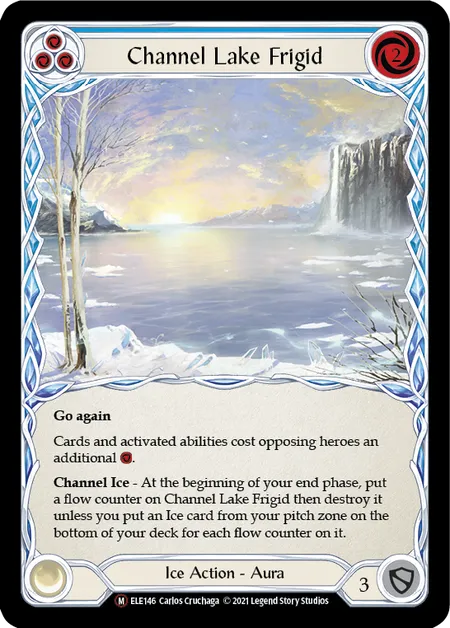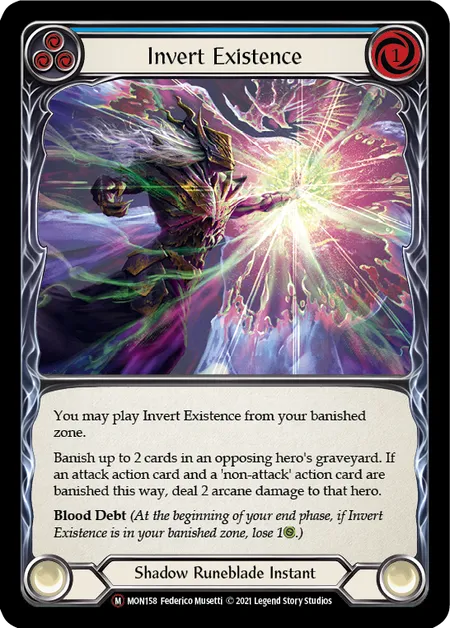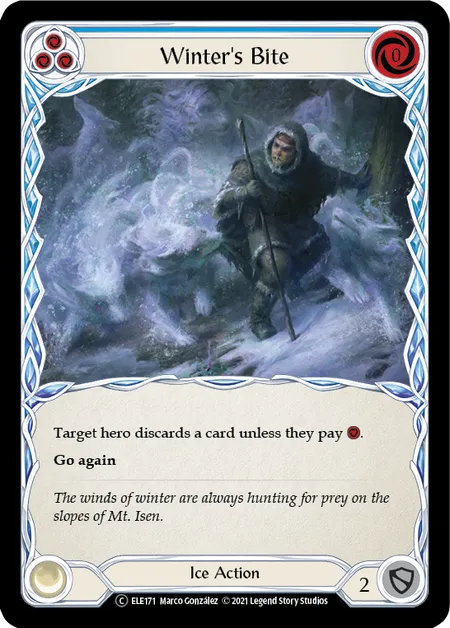We're pleased to welcome Lachlan Buchan as a guest writer for the Road to Nationals season. Lachlan is a competitive Flesh and Blood player who placed in the Top 4 of the Australian National Championship in 2021. He recently returned from the Pro Tour: New Jersey and has his sights set on the upcoming National Championship after his success at ProQuest events. Lachlan has competed at a high level in TCG's for a number of years, and wants to share his learnings with the broader community through strategy content that will take your game to the next level!
Welcome back to my final article for the current Road to Nationals season. I hope you have all had time to settle in and take some learnings from my previous article around mindset. In this article, I want to relay more evergreen concepts that will help your overall tournament experience and get you thinking about the game in a different way. I would also like to thank the community for the positive feedback I received on my previous article, it is not always easy to admit you made a mistake, so I appreciate everyone’s kind words on the various social media platforms! Let’s jump in!
Whenever I am attending a large event like Road To Nationals where the meta is going to be quite diverse I try and break my deck selection process down to 3 key elements which I have dubbed my MPS score. Meta placement, Proficiency, Simplicity. There will always be a deck that is considered “the best” or a “boogieman” that will naturally incur a big target on their back. The dilemma we have as players is whether to play that deck, play the counter, or something else entirely. But the “best deck” is the boogie man for a reason, what is a player to do? This system helps you make that decision whilst also taking into account your skill with particular heroes. This is not a foolproof system by any means, but I encourage you to run all the decks you are considering for your next tournament through the MPS check to help with your decision-making.
Meta Placement
Below is an example of a table that you can use to map your opinions of the current meta match-up breakdown. The top row (X-Axis) shows the top 10 decks you expect to face at your upcoming tournament based on recent performance and local meta, and the first column (Y-Axis) shows the top 3 decks you are considering playing. In each box simply place what you perceive (or know) to be the current win % of the deck against the decks along the X axis. If a deck on the Y axis is at least 50% against the deck on the X axis it gets assigned a green square. The more green squares, the better the deck is placed in the meta. To assign a rating out of 10 just count the number of green squares and divide it by the total number of decks you’ve compared it to. In the below example “Deck 1” has 8 green squares out of 10. The best way to get the % scores inside each of the boxes is by testing the matchups and keeping a record. If you don’t have the time to test every match-up personally then you can take your best-educated guess based on information available to you in your community/testing group. I used ten decks to make the conversion easy, but this also works on more than ten decks.
| Deck 1 | Deck 2 | Deck 3 | Deck 4 | Deck 5 | Deck 6 | Deck 7 | Deck 8 | Deck 9 | Deck 10 | |
|---|---|---|---|---|---|---|---|---|---|---|
| Deck 1 | 50% | 60% | 70% | 30% | 30% | 60% | 55% | 70% | 55% | 60% |
| Deck 2 | 40% | 50% | 50% | 60% | 60% | 60% | 60% | 45% | 60% | 60% |
| Deck 3 | 30% | 50% | 50% | 60% | 40% | 55% | 45% | 30% | 60% | 70% |
Deck Proficiency
The game of Flesh and Blood rewards smart decisions, it’s as simple as that. If you gamble at the wrong time you may find yourself in a losing position. I can’t tell you how many times I have died to a Razor Reflex or a Pummel just from being greedy in my early days of playing the game, which I am sure is an experience you can all relate to. Identifying when it is safe to gamble and when it is correct to fully block comes down to Deck Proficiency. What do I mean by proficiency? Well, any half-decent Flesh and Blood player will be able to pick up almost any deck and be able to play a functional game of Flesh and Blood. You play out your cards and hope you win with no real clear game plan.
Deck Proficiency is understanding what your deck needs to do to win the game before the match even begins and understanding all the key small interactions that may not be obvious when first picking up the deck. An example of this from the previous meta is that As the Bravo, Star of the Show player you needed to be very careful with your non-attack actions. The trick was to not block or play any non-attack actions in your match-up against Chane to play around the endgame of Invert Existence dealing two arcane damage to you. The obvious move would be to play out a card like Channel Lake Frigid to delay your opponent by a turn or two but through testing, the team identified that this gave the Chane player more time which played into Chane’s game plan.
It is important when assigning yourself a rating out of 10 for this section to try and be as honest with yourself as possible. This is a reflection of how well YOU play the deck. Ask yourself, would you be able to explain your strategy to win the game to a newer player? Do you have the deck list memorised? Do you know how to get every scrap of value out of your 80 cards? Remember this score is for you so try and be as open with yourself as possible.
Simplicity
The beauty of Flesh and Blood is that any given game involves hundreds of decisions. When to block? With what? For how much? Should I block with equipment? And this is just for a single attack! All these decisions combined determine the outcome of the game. As much as we would all like to think we are perfect the reality is over the course of a 9-round day of gameplay you will end up making mistakes, some bigger than others but they will be there. What we are trying to do with the Simplicity rating is to determine how detrimental that mistake is to our overall game plan. It is different from Deck Proficiency in the sense that this is how many decisions you must make in the game over the course of the game that contribute to your strategy.
How I think about this is that the higher the rating here the more straightforward decisions you need to make are. For example, when comparing the two runeblades in Classic Constructed, I would give Briar a 10 on Simplicity because it is one of the easier decks to play in the format, whilst Viserai would receive a 5 based on its complex lines and options of play. Picking a high Simplicity rating deck greatly reduces your risk to making a detrimental mistake over a big tournament.
I know this may seem counterintuitive to a game with as many decision trees as Flesh and Blood, but throughout the game’s history decks with a strong linear game plan have risen to the top of the meta most of the time. And until that changes I think this is a good way to look at it!
Bring It All Together
You should now have:
- A MPS score out of 30
- A score out of 10 for Meta placement,
- A score out of 10 for Deck proficiency and
- A score out of 10 for Simplicity
Your short list of decks you are considering playing should be the decks with the highest overall scores and hopefully this is the tiebreaker you need. You might have noticed that both of my articles have had “formula” style inclusions, I believe this is one of the best ways to train your brain into a way of thinking. Obviously, there are exceptions to these rules however it is a good consistent indicator on how a deck currently fares with you as the pilot. Note that the MPS formula does not take into consideration the level of Dominance of a certain deck, if a deck is over 50% of the field for example that changes the above completely. Another caveat I would like to put on the above is that by having less decisions there is less chance for you as a player to then outplay your opponent over the course of the game which I think is true for the best players in the world so use this system when appropriate!
Final Word
There are currently 17 playable heroes in Classic Constructed and almost all of them are viable choices right now. The above theory is simply a guide to help you narrow down your choices and apply some cold hard numbers to when you feel like multiple decks are good choices. If you still can’t decide what to play right now my advice is to play what you love or specialise in! I have really enjoyed testing all the new heroes into old powerhouses (I am personally really enjoying Dromai!) and I think the result may surprise some people. This is a great time to be a Flesh and Blood player with Pro Tour Lille just around the corner and Nationals not far behind that the meta is shaping up to be one of the best yet. Until next time!
Lachlan Buchan is a competitive Flesh and Blood player and author of content relating to gameplay and strategy. The opinions expressed in the above article are his own and do not necessarily reflect the views of Legend Story Studios.


